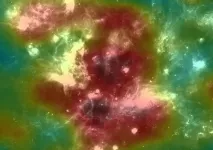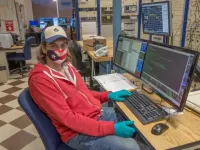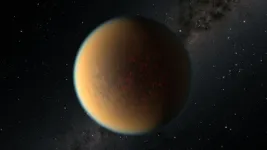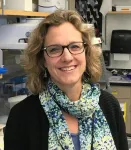Climate change damaging North America's largest temperate rainforest, harming salmon
CU Denver's Brian Buma joined researchers to evaluate the region's ecosystem of 200-foot trees and deep soils
2021-03-11
(Press-News.org) New research released in Bioscience found that a remote region of North America's largest temperate rainforest is experiencing changes to its ecosystem due to climate change. Brian Buma, a researcher and professor of integrated biology at University of Colorado Denver, co-leads the research network that outlined the changes in a new paper.
North America's largest remaining temperate rainforest, located in Southeast Alaska, is one of the most pristine and intact ecosystems. The entire ecosystem stretches well over 2,000 km from north to south and stores more carbon in its forests than any other.
The region can store more than 1,000 tons per hectare of carbon in biomass and soil. Although the area is extremely remote, researchers say it is not immune from the negative impacts of climate change. Glaciers are disappearing faster than most other places on Earth and winter snows are turning into winter rains. This is leading to a change in stream temperatures, which can harm salmon, and changes in ground temperatures, causing the death of forests.
"This is an incredible landscape in a relatively compact area we have as much biomass carbon as 8% of the lower 48 states put together," said Buma. "The 200-foot trees, the deep soils--it's just layers and layers of life. And that land is so intertwined with the water that any change in one means massive change in the other, downstream and into the ocean."
Why is this important? Forests absorb more carbon than they release. Trees absorb carbon during photosynthesis, removing large amounts of carbon from the atmosphere. Since the forest is growing faster as the climate warms, a lot of that carbon "leaks" out through the creeks and rivers. This carbon powers downstream and marine ecosystems, which thrive on the flow of energy off the land.
"This region is immensely important to global carbon cycles and our national carbon strategy, but we still don't know the direction overall carbon stocks and movement will take as the world warms," said Buma. "While there is ample research identifying how important this area is, more work is needed to determine where this large reservoir will trend in the future."
INFORMATION:
Credit for the research paper is attributed to a workshop organized by the Coastal Rainforest Margins Research Network, supported by the National Science Foundation, the University of Washington Freshwater Initiative, the Hakai Institute, and the University of Alaska Southeast.
ELSE PRESS RELEASES FROM THIS DATE:
2021-03-11
New research by the National Institutes of Health found that unbalanced progesterone signals may cause some pregnant women to experience preterm labor or prolonged labor. The study in mice -- published online in the Proceedings of the National Academy of Sciences -- provides novel insights for developing treatments.
During pregnancy, the hormone progesterone helps to prevent the uterus from contracting and going into labor prematurely. This occurs through molecular signaling involving progesterone receptor types A and B, referred to as PGR-A and PGR-B. In this ...
2021-03-11
LOS ALAMOS, N.M., March 11, 2021--A long-time question in astrophysics appears to finally be answered, thanks to a collection of large, high-tech water tanks on a mountainside in Mexico. The High-Altitude Water Cherenkov (HAWC) data shows that the highest-energy cosmic rays come not from supernovae, but from star clusters.
"The origin of the highest-energy cosmic rays in the galaxy has been an open question in astrophysics for more than 60 years," said Patrick Harding, a Los Alamos National Laboratory astrophysicist doing research using HAWC. "Very few regions of the galaxy have both the power to produce high-energy ...
2021-03-11
Black women have 80% higher risk of preterm birth between 32 and 33 weeks of pregnancy if a Black person who lives in their neighborhood is killed by police during the pregnancy, according to a study by researchers at UC San Francisco and UC Berkeley.
The study by scientists at the UCSF California Preterm Birth Initiative (PTBI-CA) and UC Berkeley School of Public Health, studied the records of 3.8 million pregnant women to assess whether fatal police violence occurring in their neighborhood during pregnancy was associated with extremely early, early, moderate or late preterm delivery.
"Our findings suggest that deaths due to police violence, which already differentially affect Black and Brown communities, adversely affect the health of mothers and babies ...
2021-03-11
BOSTON - As COVID-19 infection rates continue to fall, Massachusetts officials are signaling it's almost time to end remote learning and send all school-aged children back to the classroom. While emerging data suggest young children and schools have not been primary drivers of the COVID-19 pandemic, evidence to guide best practices to prevent the spread of the virus in the school setting has been limited and, as a result, national and international recommendations are inconsistent.
A study led by Beth Israel Deaconess Medical Center (BIDMC) physician-researchers provides new, much-needed data about the optimal physical ...
2021-03-11
Climate change is affecting the water balance of our planet: depending on the region and the time of year, this can influence the amount of water in rivers potentially resulting in more flooding or drought. River flow is an important indicator of water resources available to humans and the environment. The amount of available water also depends on further factors, such as direct interventions in the water cycle or land use change: if, for example, water is diverted for irrigation or regulated via reservoirs, or forests are cleared and monocultures grown in their place, this can have an impact on river flow.
However, how river flow ...
2021-03-11
Using the same principles that make polarized sunglasses possible, a team of researchers at the Arecibo Observatory in Puerto Rico have developed a technique that will help better defend against asteroids on a collision course with Earth.
A new study recently published in The Planetary Science Journal found a better way to interpret radar signals bounced off asteroids' surfaces. The data can better tell us if an asteroid is porous, fluffy or rocky, which matters because there are hundreds of near-Earth asteroids that could potentially hit the planet.
"Learning more about the physical properties of asteroids is crucial in Planetary Defense," says Dylan Hickson the lead author and a research scientist at the Arecibo Observatory in Puerto Rico. "A porous, fluffy asteroid does ...
2021-03-11
The planet GJ 1132 b appears to have begun life as a gaseous world with a thick blanket of atmosphere. Starting out at several times the radius of Earth, this so-called "sub-Neptune" quickly lost its primordial hydrogen and helium atmosphere, which was stripped away by the intense radiation from its hot, young star. In a short period of time, it was reduced to a bare core about the size of Earth.
To the surprise of astronomers, new observations from Hubble [1] have uncovered a secondary atmosphere that has replaced the planet's first atmosphere. It is rich in hydrogen, hydrogen cyanide, methane and ammonia, and also has a hydrocarbon haze. Astronomers theorise that hydrogen from the original atmosphere was absorbed into the planet's molten magma mantle and is now being slowly released ...
2021-03-11
Breast cancer is harmful enough on its own, but when cancer cells start to metastasize -- or spread into the body from their original location -- the disease becomes even more fatal and difficult to treat.
Thanks to new research published in Oncogene from the lab of University of Colorado Cancer Center associate director of basic research Heide Ford, PhD, in collaboration with Michael Lewis, PhD, from Baylor College of Medicine, doctors may soon have a better understanding of one mechanism by which metastasis happens, and of potential ways to slow it down.
"Metastasis is a huge problem nobody's tackled very well," says Ford, who ...
2021-03-11
The universe is filled with magnetic fields. Understanding how magnetic fields are generated and amplified in plasmas is essential to studying how large structures in the universe were formed and how energy is divided throughout the cosmos.
An international collaboration, co-led by researchers at the University of Rochester, the University of Oxford, and the University of Chicago, conducted experiments that captured for the first time in a laboratory setting the time history of the growth of magnetic fields by the turbulent dynamo, a physical mechanism thought to be responsible for generating ...
2021-03-11
Optical-resolution photoacoustic microscopy (OR-PAM), a new hybrid imaging technique, allows us to listen to the sound of light and see the color of biological tissue itself. It can be used for live, multicontrast functional imaging, but the limited wavelength choice of most commercial lasers and the limitations of the existing scanning methods have meant that OR-PAM can obtain only one or two different types of contrast in a single scan. These limitations have made multicontrast functional imaging time-consuming, and it's been difficult to capture the ...
LAST 30 PRESS RELEASES:
[Press-News.org] Climate change damaging North America's largest temperate rainforest, harming salmon
CU Denver's Brian Buma joined researchers to evaluate the region's ecosystem of 200-foot trees and deep soils



